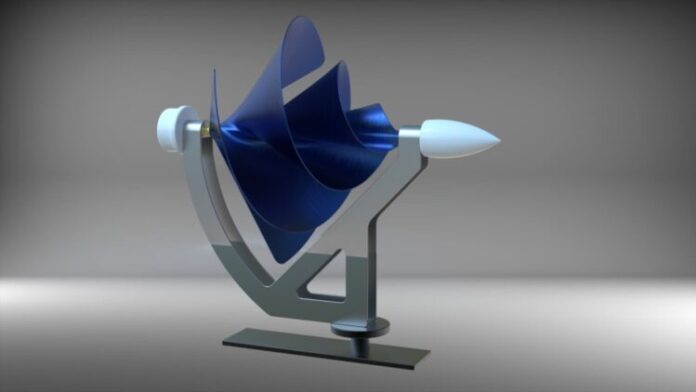As the world searches for reliable clean energy sources, traditional silicon PV solar panels have dominated the residential solar power market. However, a new competitor has emerged: the LIAM F1 UWT, a quiet, home-integrated wind turbine with significant potential. This innovative turbine not only complements solar technology but also challenges its dominance in renewable energy generation.
The Silent Wind Turbine That Could Transform Your Energy Bills
The LIAM F1 UWT, designed by the Dutch startup Archimedes, stands out from conventional wind turbines, which are often noisy and visually unappealing in urban settings. With a diameter of just 1.5 meters and a weight under 100 kilograms, this turbine is ideal for residential areas where space is limited.
Its spiral rotor design allows it to capture wind from any direction, ensuring optimal power generation even with fluctuating winds. This makes it particularly suitable for homeowners who have previously avoided wind power due to noise concerns.
Operating at noise levels below 45 dB, the LIAM F1 UWT is much quieter than traditional turbines, making it neighbor-friendly. As urbanization increases, this turbine could become a standard feature on rooftops and in gardens, providing renewable energy without the noise.
Why the LIAM F1 UWT Outshines Traditional Solar Panels
While solar panels have been the go-to renewable energy source for eco-conscious homeowners, the LIAM F1 UWT offers several advantages worth considering. Solar panels depend on sunlight and can produce less power during darker months or in cloudy regions. In contrast, the LIAM F1 UWT harnesses wind energy, which is often available even at night.
Generating between 300 and 2,500 kWh per year, the LIAM F1 UWT can provide additional free electricity alongside solar power, potentially making homeowners nearly energy-independent. Its efficiency in low and variable wind conditions ensures that even in areas with limited sunlight, wind energy remains a reliable option.
The Need for Innovative Wind Power Solutions in Urban Areas
As cities strive to reduce carbon emissions and combat climate change, the LIAM F1 UWT offers a promising solution. Imagine a world where rooftop wind turbines and solar panels work together seamlessly to produce clean energy.
Decentralizing energy production could greatly benefit urban planning and design, allowing cities to embrace green energy while maintaining their aesthetic appeal. The Netherlands, a leader in wind energy technology, showcases its commitment to solving energy challenges with the LIAM F1 UWT.
Small, easy-to-implement technologies like the LIAM F1 UWT have the potential to significantly cut carbon emissions in cities. As the focus on renewable energy grows, this silent wind turbine represents a glimpse into a future where clean energy is practical, accessible, and stylish.
The Future of Wind Energy Innovations and Advancements
The LIAM F1 UWT marks just the beginning of a revolution in renewable energy solutions. Archimedes’ future projects aim to expand the use of marine wind turbines for sailing ships and integrate wind-solar systems to boost energy efficiency. This approach highlights the potential of investing in diverse energy forms to ensure a reliable energy supply year-round.
As the adoption of photovoltaic panels grows, experts caution that relying solely on them may become challenging, especially during autumn and winter when their efficiency drops. Innovations like the LIAM F1 UWT help homeowners maintain energy independence and mitigate the drawbacks of solar reliance. This silent wind turbine underscores the importance of diversification and flexibility in the future of renewable energy.
In summary, the LIAM F1 UWT offers a fresh perspective on renewable energy sources in America. Its virtually noiseless operation, urban-friendly design, and ability to harness wind energy make it a game-changer for home energy systems. As the world moves towards sustainability, adopting technologies like the LIAM F1 UWT could become a key strategy for achieving energy independence.
Source: Eco Noticias






